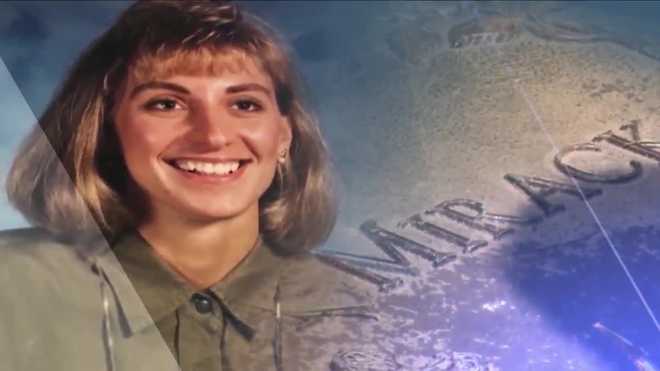A Classroom Left Empty—and a City Forever Changed
It was supposed to be a normal school day in Lancaster, Pennsylvania. But when 25-year-old Christy Mirack didn’t show up to teach her sixth-grade class on December 21, 1992, her principal felt something was wrong. What he discovered inside her home wasn’t just tragic—it was the beginning of a 26-year mystery.
She was found beaten, raped, and strangled. Her body, still clothed for school, lay near a broken cutting board—a likely weapon, turned silent witness. Her absence that morning marked the beginning of a decades-long fight for justice.
The case would remain unsolved for more than two decades—until a revolutionary technique called genetic genealogy shattered the silence.
The Monster No One Saw Coming
Christy Mirack was vibrant, kind, and deeply loved by her students. She had no known enemies. But her murder was vicious—personal. Whoever killed her watched her, knew her routine, and struck with violent intent.
Despite the horror, DNA evidence was collected. Investigators believed it would break the case. But when it was run through the FBI’s CODIS database? Nothing. The trail went cold. And for years, the file sat—silent, unresolved.
The Relentless Prosecutor Who Refused to Forget
Fast forward to 2015. Christine Wilson, now a prosecutor in Lancaster County, had been just a high school student when Christy died. But the case stayed with her.
“It was more than just a file,” Wilson recalled. “It was a teacher. A daughter. A life brutally stolen.”
Determined to give Christy’s family answers, Wilson and her team re-examined every detail—until science gave them a second chance.
How Genetic Genealogy Changed Everything
In 2018, Wilson’s office partnered with Parabon NanoLabs, a cutting-edge lab using DNA to build suspect profiles from genetic traits. They created a facial sketch from the killer’s DNA. But even that wasn’t enough to identify him.
Then came the breakthrough: uploading the killer’s DNA into a public genealogy database.
Suddenly, a match appeared—not a suspect, but a distant cousin. From there, genealogists built a family tree, branching backward and forward until only one man stood at the end of the line:
Raymond “DJ Freez” Rowe.
He wasn’t on anyone’s radar. No criminal record. No known connection to Christy. But the DNA didn’t lie.
The Sting Operation That Sealed His Fate
Investigators began watching Rowe. At an event, he tossed away a water bottle and chewing gum. It was enough. The lab compared it to the DNA from 1992.
It was a perfect match.
In June 2018, police arrested the beloved local DJ—a man who had been spinning music at weddings, charity events, and school dances for years. While the city danced, he hid in plain sight.
Guilty—but Not Remorseful
Raymond Rowe eventually pleaded guilty in January 2019. He admitted to the rape and murder of Christy Mirack and was sentenced to life without parole.
But in a twisted turn, Rowe recanted his confession. He claimed he and Christy had been in a secret relationship. He insisted someone else had killed her.
Investigators, however, didn’t buy it. Neither did the court. The physical evidence—and the brutality of the attack—pointed clearly to Rowe.
“That claim was a final insult,” said Wilson. “A last-ditch lie from a man who thought charm would save him.”
Christy Mirack: More Than a Victim
To her friends and students, Christy was a light. She was the teacher who made her students feel seen. The daughter who never missed a call home. The friend who lit up a room.
For 26 years, her name sat on a cold case shelf. Now, it stands as a symbol of what science, perseverance, and justice can achieve.
Justice Through the Power of DNA
The Mirack case wasn’t just a victory—it was a revolution. It proved that genetic genealogy could do what decades of dead ends could not.
Since then, the same technique has cracked open dozens of long-forgotten cold cases, giving families like Christy’s the one thing they crave most: answers.
FAQs: Christy Mirack’s Case and Genetic Genealogy
What is genetic genealogy?
It’s the use of DNA combined with genealogical research to identify suspects or victims through family trees built from shared DNA.
Who was Raymond Charles Rowe?
A well-known local DJ in Pennsylvania who had no prior criminal record but was ultimately identified as Christy Mirack’s killer.
How long was the case unsolved?
For 26 years, from 1992 until the DNA breakthrough in 2018.
Was there any connection between Christy and Rowe?
No known connection. He wasn’t on police radar, making his arrest all the more shocking.
What role did Christine Wilson play?
She was the prosecutor who reignited the investigation and used genetic genealogy to pursue justice.

